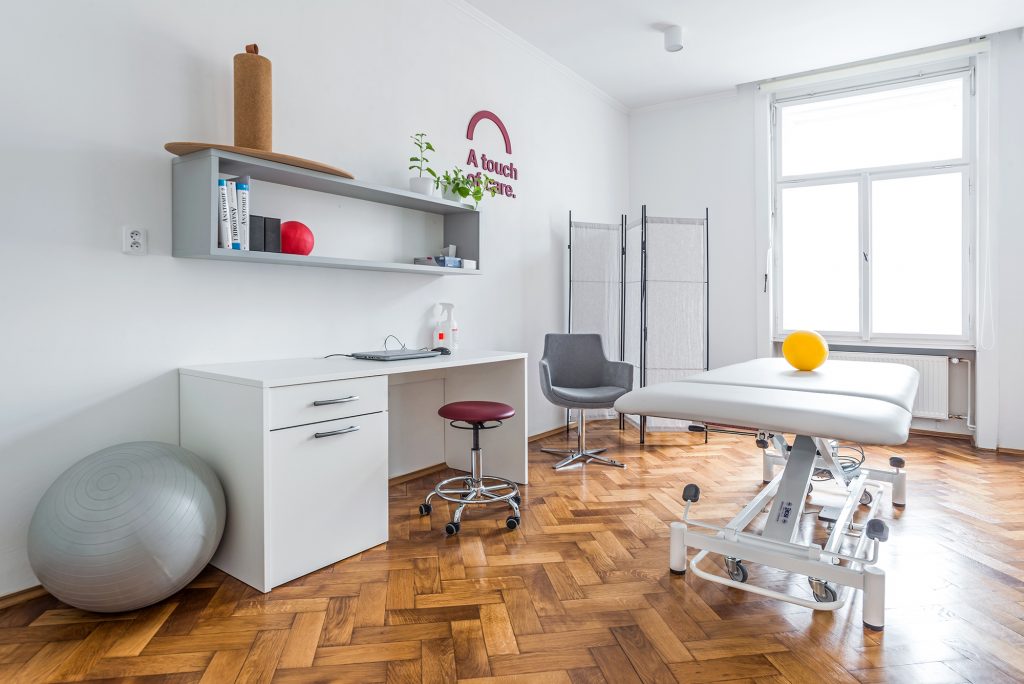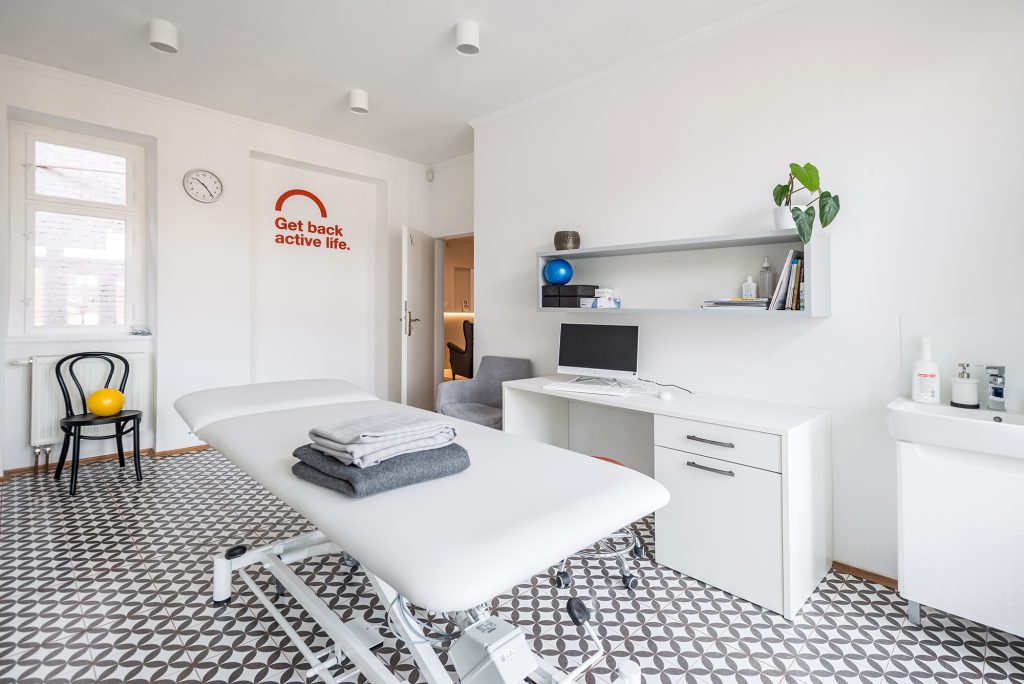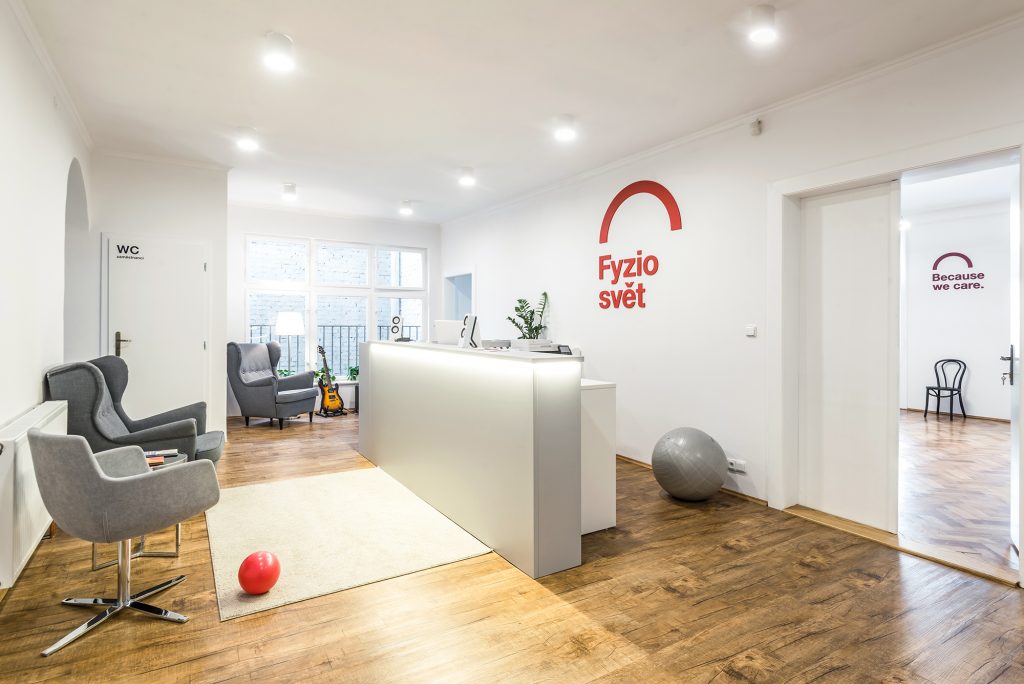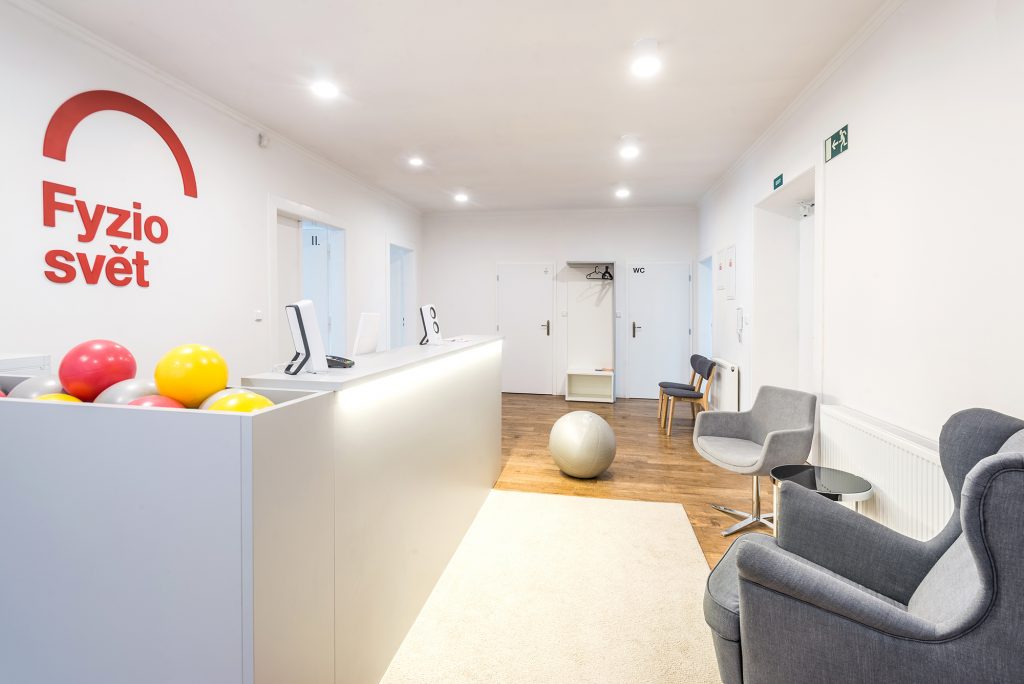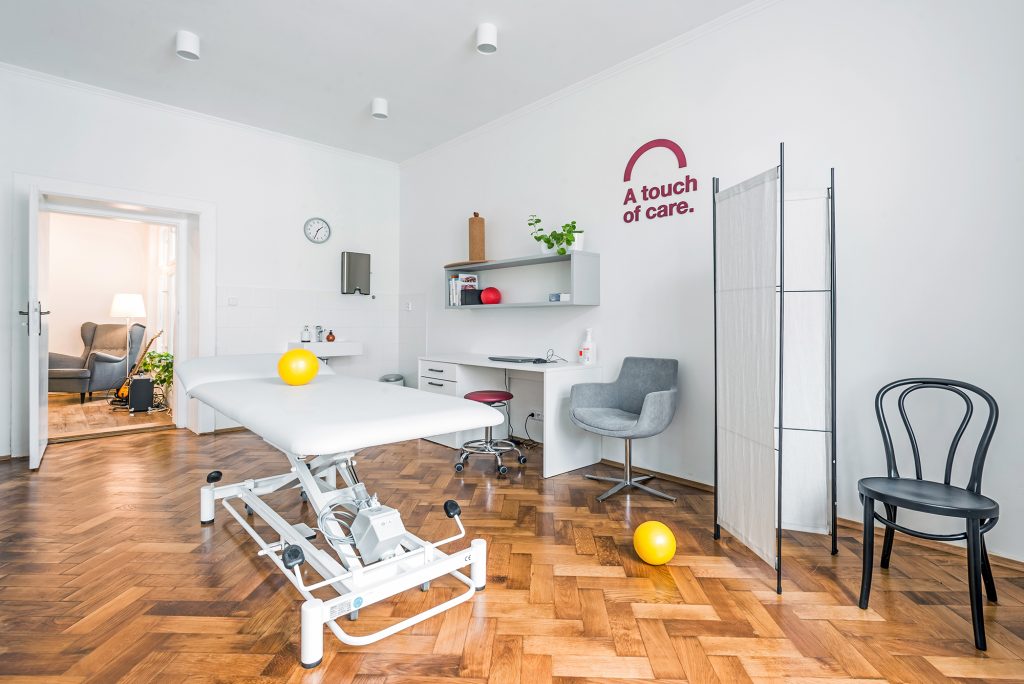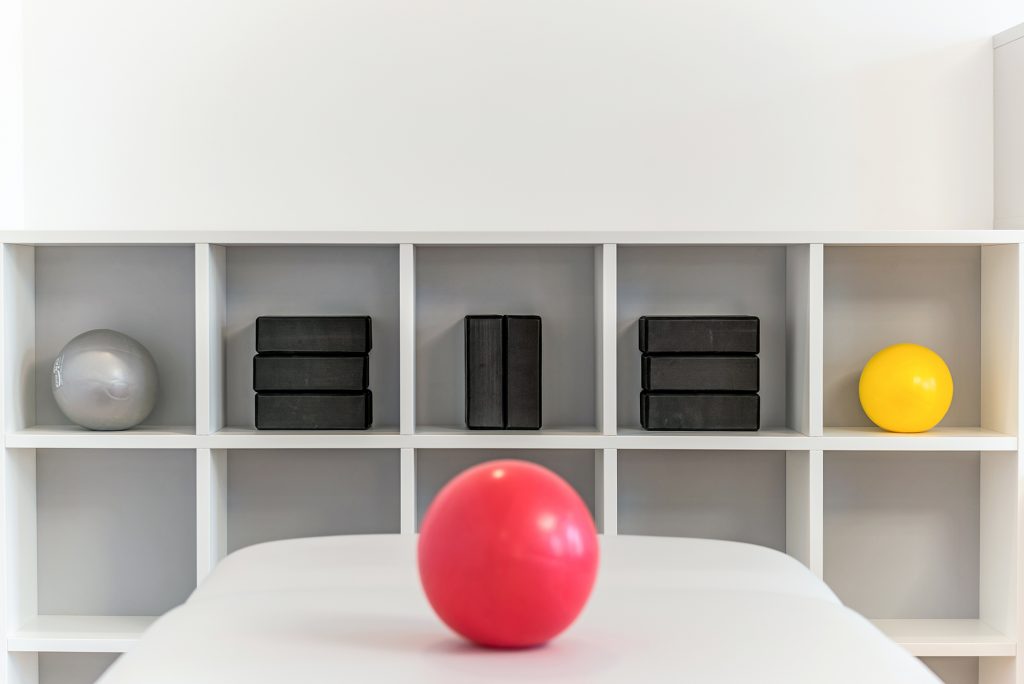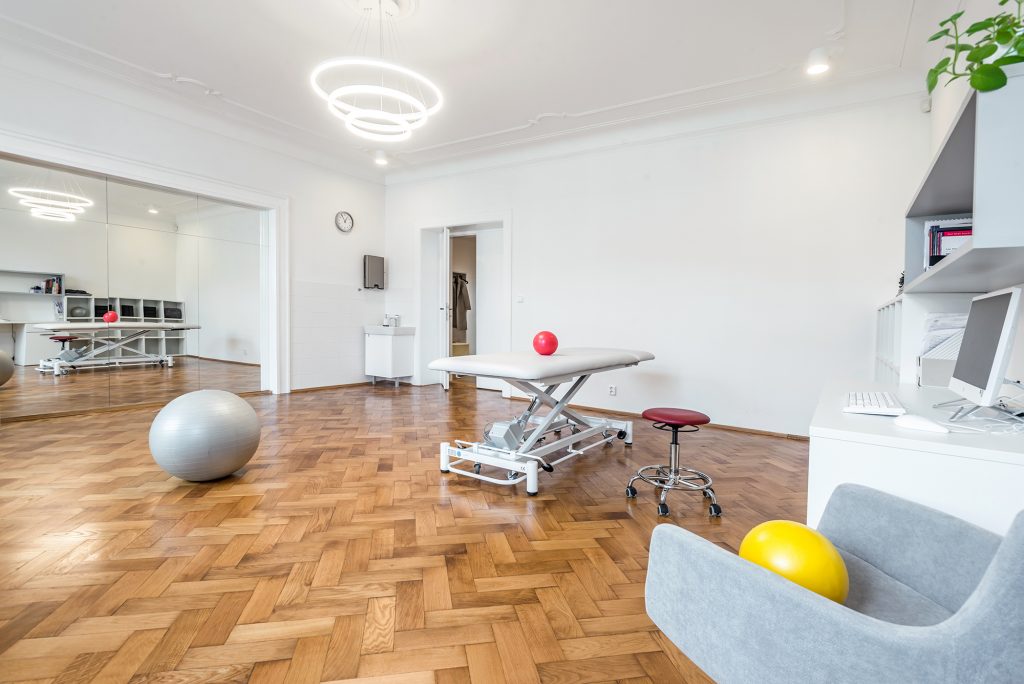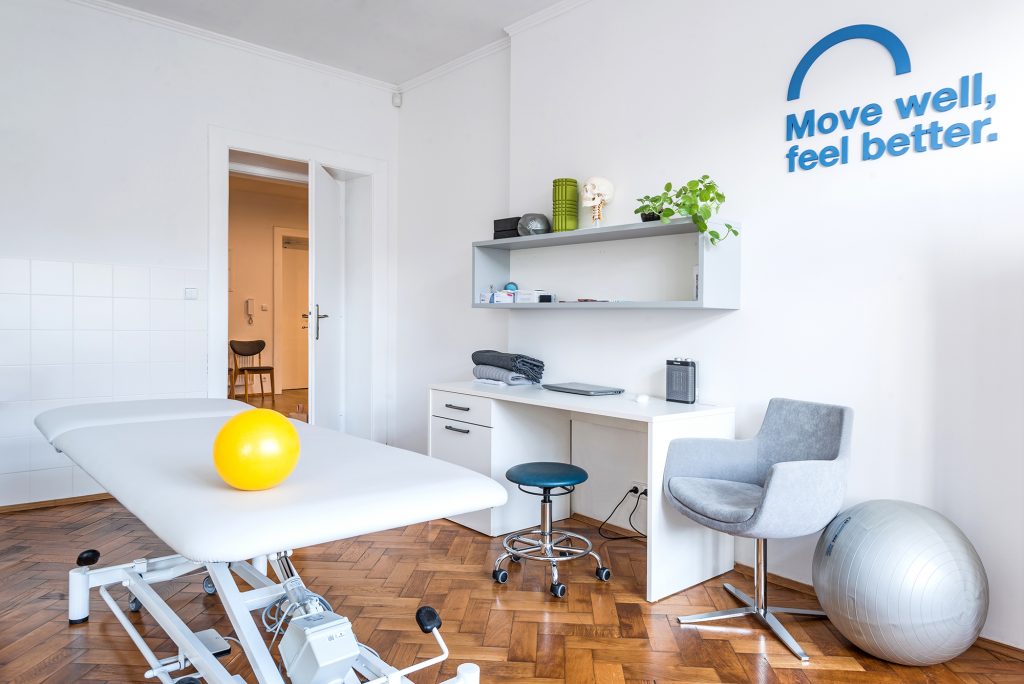4 Most Common Causes of Hip Joint Pain
The hip joint is one of the most heavily used and burdened joints in the human body. It connects the femur (thighbone) to the pelvic bone (trunk). Due to this connection, the hip joint plays a crucial role in support, balance, and as a conduit for force between the trunk and lower limbs. The joint consists of the acetabulum (hip socket) in the pelvis, the femoral neck, and the femoral head. Each contact surface is covered with cartilage that ensures smooth movement and reduces friction. Additionally, the joint is supported by a system of ligaments and muscles that contribute to both its mobility and stability. An important structure in the hip joint is the labrum, a fibrous ring around the socket. It increases the contact area by about 21% and helps maintain joint fluid inside, reducing friction and providing nutrition to the cartilage.
Hip pain is common, but the source of pain isn’t always in the hip joint itself—it can originate from the spine, knee joints, or even internal organs. Therefore, a holistic approach is essential when diagnosing hip pain, carefully considering the client’s description of their pain. Below are the most common painful conditions that bring clients to our clinic.
Hip Osteoarthritis (Coxarthrosis)
Over time, cartilage in the joint wears down due to excessive pressure. When the cartilage is damaged beyond a certain point, it leads to osteoarthritis. Increased pressure and the loss of the cartilage’s protective layer cause the space between bones to shrink, and in advanced cases, it may disappear entirely. Osteophytes (bone spurs) can form at the bone ends, further aggravating the rough bone surfaces and intensifying pain. Osteoarthritis also affects the surrounding soft tissues, where some muscle groups contract as a protective response to create a “brace” for the joint. This muscle tension often triggers painful points, which further exacerbate the discomfort.
Osteoarthritis typically affects one leg, but limited mobility and increased demand on the other leg may cause it to become bilateral over time. The main diagnostic tool is an X-ray, which reveals the condition of the joint and the space between the contact surfaces. However, the X-ray findings may not always correlate with the client’s subjective symptoms. Diagnosis and treatment plans are overseen by an orthopedic surgeon, who will assess whether surgery (e.g., total hip replacement) is necessary or if conservative treatment through physiotherapy is appropriate.
Common Causes of Osteoarthritis:
- Anatomical factors: Congenital hip defects, unequal leg length, hypermobility
- Trauma: Excessive sports strain, fractures, injuries
- Metabolic factors: Diabetes, gout
- Inflammatory conditions: Rheumatoid arthritis
Symptoms:
- Sharp, stabbing pain in the groin, inner thigh, or knee
- Difficulty bending forward, such as when tying shoes or squatting
- “Start-up” pain at the beginning of physical activity
- Later stages: pain at rest or at night
- Restricted range of motion, especially in hip extension and internal rotation
- A flexed posture (bent forward trunk or bent knees) indicating limited hip movement
- Trigger points in the pelvic muscles and hip adductors
- Clicking or grinding sensations in the hip joint
- A sensation of warmth, indicating inflammation
Treatment at Fyzio Svět: If osteoarthritis is confirmed (e.g., via X-ray) but surgery isn’t yet necessary, the goal is to prolong the life of the joint and delay surgery. Key treatment steps include reducing pain through gentle joint traction, releasing muscle trigger points, and relieving tension in the surrounding soft tissues. Exercise is essential to maintain full range of motion and strengthen weakened muscle groups, particularly the glutes and hamstrings. It’s important to continue exercising even after the acute pain subsides to keep the joint mobile without overloading it or causing further pain.
Femoroacetabular Impingement Syndrome (FAI)
FAI results from prolonged irritation between the femoral head and the acetabulum due to improper positioning. This may be caused by anatomical abnormalities, misalignment of joint surfaces, or excessive load on the joint. Improper movement patterns lead to mechanical friction between the femoral head and the acetabulum, gradually damaging the cartilage, including the labrum surrounding the joint. Over time, cartilage structures remodel, which can be seen on an X-ray. FAI is classified into two main types: CAM type, more common in younger athletes, involves changes in the femoral neck or head shape, while PINCER type, more common in middle-aged women, involves changes to the acetabulum. If left untreated, FAI can lead to hip degeneration and osteoarthritis.
Symptoms:
- Pain in the groin, outer hip, or lower back (often one-sided)
- “C-sign”: Clients may grasp their hip with their thumb and fingers to demonstrate the location of pain
- Pain during prolonged walking, sitting, squatting, or sudden movements like getting out of a chair
- Progressive loss of hip motion, especially extension and internal rotation
- Clicking during rotational movements in the hip
- Over time, compensatory movements in the lower back may lead to back pain
Treatment at Fyzio Svět: Conservative treatment through physiotherapy is often successful. The goal is to realign the hip joint to prevent further irritation. The entire body posture, especially the pelvis and lumbar spine, is evaluated to ensure proper movement patterns. Treatment includes manual techniques to reduce pain, such as joint traction and myofascial release. Shockwave therapy may be used to relieve muscle tension and restore normal muscle function. A return to physical activity is possible after learning proper movement techniques.
Sciatic Nerve Compression (N. Ischiadicus)
The sciatic nerve is the longest and thickest nerve in the body, running from the lumbar spine through the buttocks and down the leg. Normally, the nerve glides smoothly through its path, adapting to movements of the lower limbs, pelvis, and spine. However, this movement can be restricted when the nerve becomes “stuck” to nearby structures, causing pain in the surrounding areas. One common site of compression is the piriformis muscle, located beneath the gluteal muscles. When the piriformis tightens, it can compress the sciatic nerve, leading to pain radiating down the leg, often resembling a herniated disc.
Symptoms:
- Pain in the buttocks, hip, or back of the thigh, often worsening with prolonged sitting
- Tingling or numbness
- Relief with stretching exercises (unlike a herniated disc)
Treatment at Fyzio Svět: Accurate diagnosis is essential to distinguish sciatic nerve compression from a herniated disc. Treatment targets the site of compression, restoring the nerve’s movement. Deep fascial and neurodynamic techniques are used to release the nerve from any adhesions.
Iliopsoas Muscle Pain
The iliopsoas is a large muscle connecting the lower spine to the pelvis and femur, responsible for hip flexion and spinal stability. It plays a role in every step we take and is closely connected to other body structures through the fascial system. Often, this muscle develops trigger points and becomes tight, reacting to various issues in the body.
Symptoms:
- Pain referred from the muscle to the groin, thigh, or lower back
- Difficulty standing up after sitting, with sharp pain in the lower back
- Pain worsens during menstruation in women
Treatment at Fyzio Svět: Identifying the root cause of iliopsoas tension is key to successful treatment. Techniques to relax the muscle are combined with exercises to reintegrate the muscle into proper movement patterns, with strengthening exercises added as needed.
If you have any questions, feel free to reach out. As physiotherapists, we specialize in treating hip joint pain and are happy to help.
